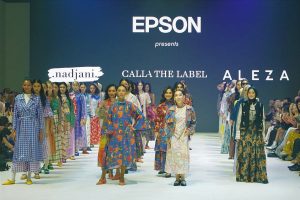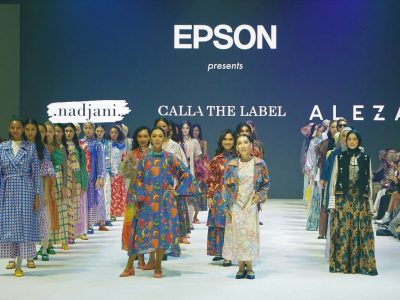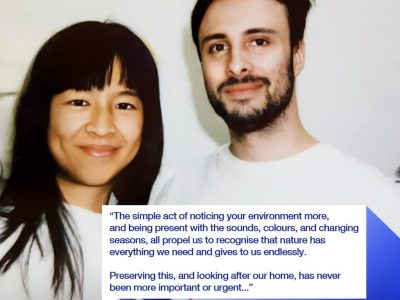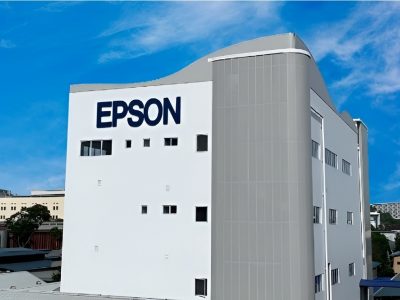Digital Textile Printing Offers Infinite Opportunities To Today’s Fashion Designers

Digital textile printing has become a powerful artistic tool for modern fashion designers. In an industry where customisation is crucial, this printing method brings to light whatever the textile artist imagines, be it bright colours or unique patterns—and in no time.
One young designer embracing digital printing, Ellie Norman, is known for her vibrant prints and unique patterns in Malaysia.
Her love for bold prints inspired her to create her own fashion line, My Apparel Zoo, which features exotic and symmetrical African prints. She started sourcing the fabric from Angola, South Africa, in 2013.
The women she worked with would personally produce the fabric using a stamping technique where the design is stamped onto the fabric using wax instead of silk screens.
Two years later, Ellie began making her own printed designs which she would send to Angola for printing.
“The thing is: these are not mass produced fabrics. The prints are all done by women at home. It was done in smaller quantities, which worked at that time because I was catering to a small market here.”
Embracing innovation
Her never-ending search for innovation in design prompted her to try out digital textile printing in 2016.
“As a designer I wanted to expand and try different ways of printing and prints. I didn’t want to limit myself to just stamping, and wanted to find out what else was possible,” she explains.
The designer used digital printing on silk as well as polyester fabrics and was surprised to see the difference with traditional printing.
“Digital printing is a lot clearer, a lot smoother. The colours are richer. The way they stood out was different to traditional printing,“ she says.
Collaboration with Epson
But it was her collaboration with Epson Malaysia during the 2017 Kuala Lumpur Fashion Week that convinced her of the full benefits of good quality digital printing.
“I think the quality of the prints was better with Epson printers. It was very clear cut. With the technology that Epson was using, we can put anything that we created on a file onto fabric,” says the 27-year-old.
“When I used a digital printer before, there were a lot of things I wasn’t happy with in terms of quality or colouring. When using Epson for the fashion week collection, I felt the colours were a lot clearer and even richer.”
While the quality met Ellie’s high standards she was also able speed up the production process. Compared to the traditional stamping process digital textile printing is a lot faster. Ellie was able to complete a printing run in a couple of days compare to weeks with the older method. The digital process saved her time and effort.
Another aspect designers are worried about, especially when using traditional printing methods, is how their piece of art would look on fabric. Ellie is no exception when it comes to anticipating the final result.
“If I draw something or make something and put it on fabric, it could look completely different. That’s many designers’ biggest worry. But with Epson I didn’t have that worry about the end result,” she says.
The coming together of My Apparel Zoo and Epson Malaysia resulted in smooth, unique designs on fabric that were digitally printed by Epson’s SureColor F-Series dye-sublimation printers, which were sold out within a few months after the show.
“I used to do more structured pieces like jackets, pants, or skirts, but with this collection and the prints I made with Epson, it was very flowy, very resort, very beach wear – A completely different dynamic,” she adds.
Technology driving creativity
With digital printing offering unlimited possibilities, the method even inspired Ellie to get more creative during her designing process, she says.
“Digital printers allow designers to print anything, from abstract to simple colours, so it definitely affected the way I design because there are no limits to my imagination,” she says.
This ability of infinite opportunities is one of the reasons why the prints-loving fashion designer would even consider purchasing an Epson digital printer.
“When I was doing the Epson printing during the collaboration, I was looking at the way it was done and it wasn’t very difficult,” says Ellie.
“I’m sure it’s something I can learn. That’s where I thought, maybe I should purchase it because it would be very beneficial: cut and print your own design as much as you want, as different as you want, and very quickly.”
Overall though, the chance to work with Epson was an inspiration for Ellie to consider digital textile printing in her future plans.
“In the next five years, I would definitely want digital printing to be one of our main sources of creating fabric. Just because of the different fabrics we could use, the different ways of making prints, and the quality of the prints that give designers many possibilities to create what they imagine.”
Find out more about My Apparel Zoo.
Posts You May Like
Get Social With Us



